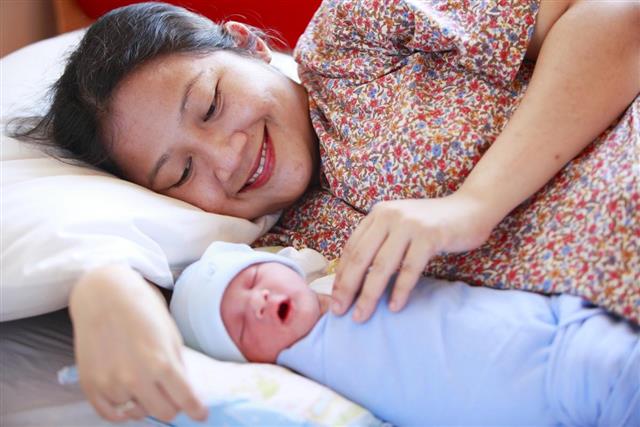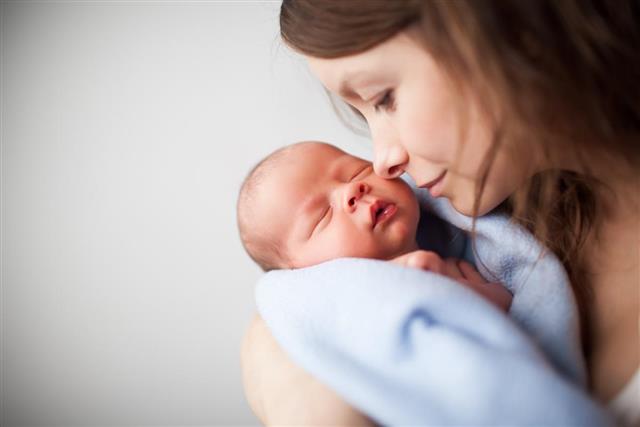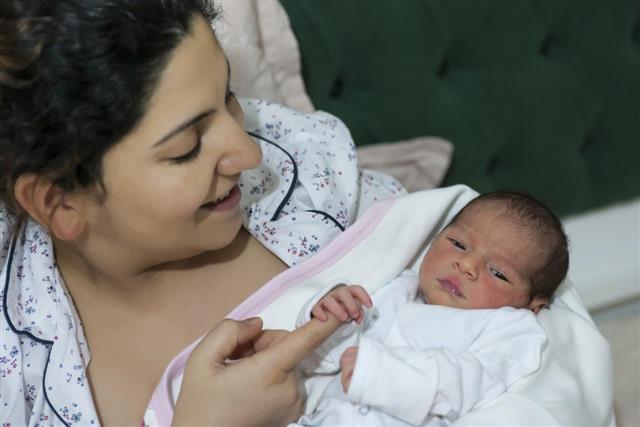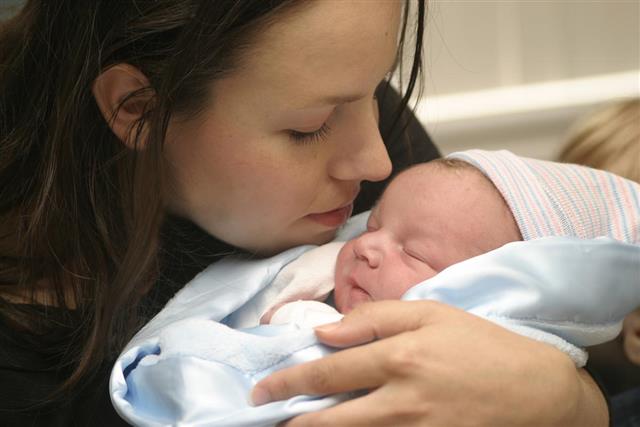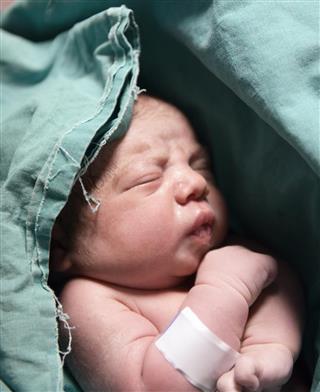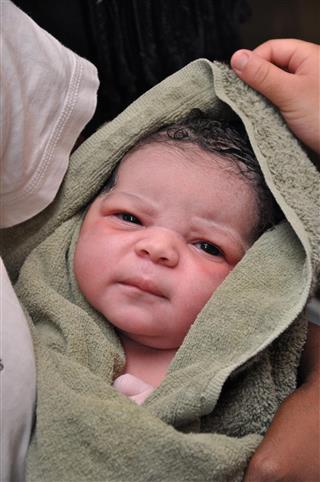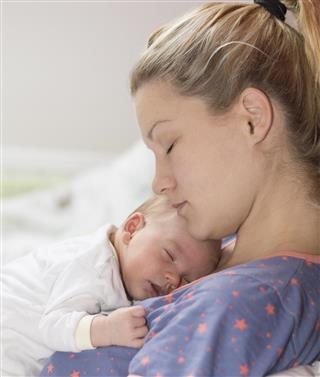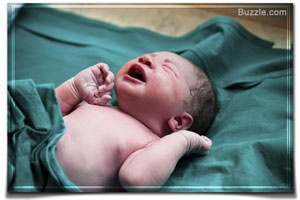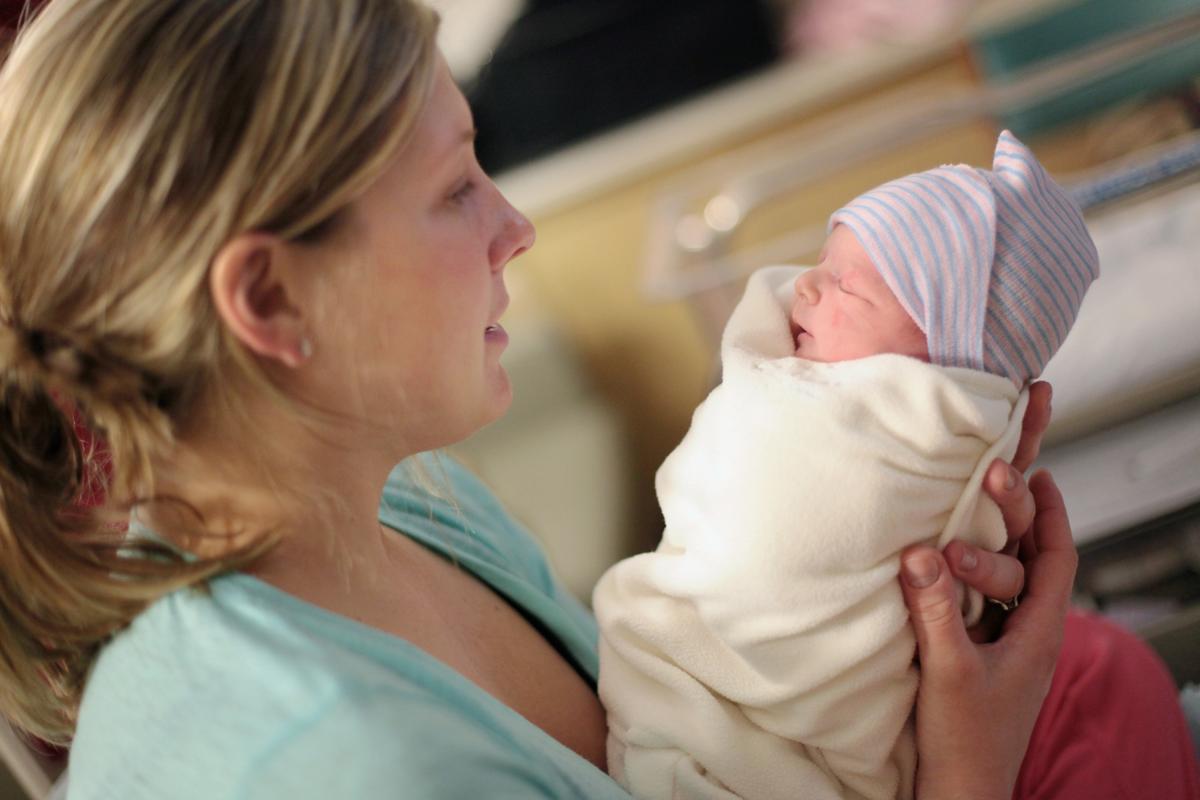
It is highly unlikely that a pregnant woman may have to unexpectedly give birth to a baby. However, in less than 1% of births, a woman who has no symptoms of labor or only periodical contractions, may suddenly feel an overwhelming urge to push, which may be due to the close arrival of the baby. The following article provides information on how to safely deliver a baby in such cases.
Delivering a baby at home without any assistance can be unnerving even for the most courageous person. Though childbirth is a natural process and women have been delivering babies since times immemorial, it is important to note down the correct delivery date and check into the nearest hospital or maternity clinic, prior to it. However, there are times when a delivery can take place even before the mother-to-be reaches the hospital. If you are with a soon-to-be mother, it is always better to be prepared for such an unforeseen situation.
What you really need to do is help the mother relax and assure her that childbirth is a natural process. Below are simple steps and stages of childbirth, which will be beneficial. Firstly, call for help, so that both you and the mother are assured that even if you have to deliver the baby, help will arrive soon.
Initial Phase
Labor Progress: In case of a woman’s first delivery, dilating of cervix may take a long time. This is the first stage of childbirth. However, if the cervix is fully dilated, it would be considered as a real emergency case.
Contractions: Time the contractions, from beginning of the first to beginning of the second and also how long they last.
- Real emergency cases: Contractions are 2 minutes apart or less and mother feels a bowel movement, which means that the baby is ready to be delivered
- Urgent cases: Contractions are 3 to 5 minutes apart, and last for 40 to 90 seconds. Such contractions would increase in intensity and frequency for at least an hour. First time mothers are likely to fall in this category.
- Non-urgent cases: Contractions are 5 minutes apart or less, and there is enough time to you to drive the mother to a nearby hospital.
Preparation:
- Wash/sanitize your hands thoroughly, scrub them till the elbow, so as to prevent an infection to the mother and baby. In case, an antibacterial soap is not available, use hand gloves.
- Set an hygienic area for birthing. Arrange all items/equipment requirements within easy reach.
- Gather few pillows, clean towels, blankets, bed sheets, a pair of scissors, a few strings, rubbing alcohol, cotton balls, and a bulb syringe or straw, if possible.
- Fill a clean bowl with warm water.
- Sooth the mother and prepare her psychologically for the delivery. Use a calm and soothing tone. Verbally direct her breathing. Tell her that even though the delivery is not at the planned hospital, there have been many emergency cases, where babies have been delivered successfully. Make her comfortable.
Delivery Phase
Encourage Pushing: Guide the mother to push only when she feels the extreme pressure. You would observe that the vagina would bulge out until the baby’s head is seen. Encourage her to push within the contractions, especially when it eases. Instruct her to exhale through her mouth when the contractions are intense. Pain can be controlled through mental relaxation and concentrating on deep breathing. Deep breathing is very beneficial in this stage.
Support the Crown: Support the crown as soon as it is out with forming a cup shape of your palms. Be careful and refrain from pulling the baby’s head or umbilical cord. If the cord is around the baby’s neck, try to loosen and remove from its head in a gentle manner. As the baby turns her head to one side, be prepared to hold the baby. If, instead of the head the baby’s buttocks or legs come out first, then it would be a breech birth. In this case, be very careful, do not panic. First, seat the mother at the edge of the bed or any other surface. Pull her legs to her chest and place pillows, blankets, where the baby is likely to fall.
Now wait till the whole body of the baby is out. Do not try to support/hold/touch the baby when half way out, as the touch may stimulate the baby to gasp, while the head is still submerged in the amniotic fluid. This would lead to complications. The body would be slippery, so keep supporting the head and neck, as it would not be strong enough.
Draining Fluids: Hold the baby with one hand supporting its neck and head, and the other supporting the body. Tilt the head down at 45 degree angle to drain the fluids. Do not hold the baby by the feet, however, feet should be slightly higher than the head. Now place the baby on the mother’s chest and cover both, mother and baby with blankets. There should be a full skin-to-skin contact between the mother and the baby, with the baby’s head placed slightly lower. The former stimulates a hormone called oxytocin, which will help mother deliver the placenta; while the latter will facilitate draining of remaining fluids.
Check Respiration: Check if baby is breathing properly. The baby should ideally be crying, if not, then rub the baby’s back with a blanket. Manually clear fluids from the baby’s mouth and nose with a clean cloth or with a bulb syringe/straw, and slap her bottom. If none of this works perform infant CPR.
Placenta: It will arrive within a few minutes or half an hour of delivering the baby. Put a bowl close to the vagina. Have the mother sit up and push. Rub below her belly button firmly to slow down bleeding, until the uterus feels like grapefruit in the lower belly. Ask the mother to breastfeed the baby, this will slow down bleeding caused on placenta removal. Bag the placenta in a plastic, as the doctor might want to test it for abnormalities.
Cut the cord: Call again, if help has not arrived. Cut the cord only if professional medical attention is hours away.
Post-Delivery Phase
Keep them warm. Put an ice pack on mother’s vagina for the first 24 hours to ease soreness. Give the mother something to eat and drink. Put a diaper on the baby, making sure that it is below the umbilical cord. Get medical help at the earliest.
Disclaimer: This HerHaleness article is for informative purposes only, and should not be used as a replacement for expert medical advice.
